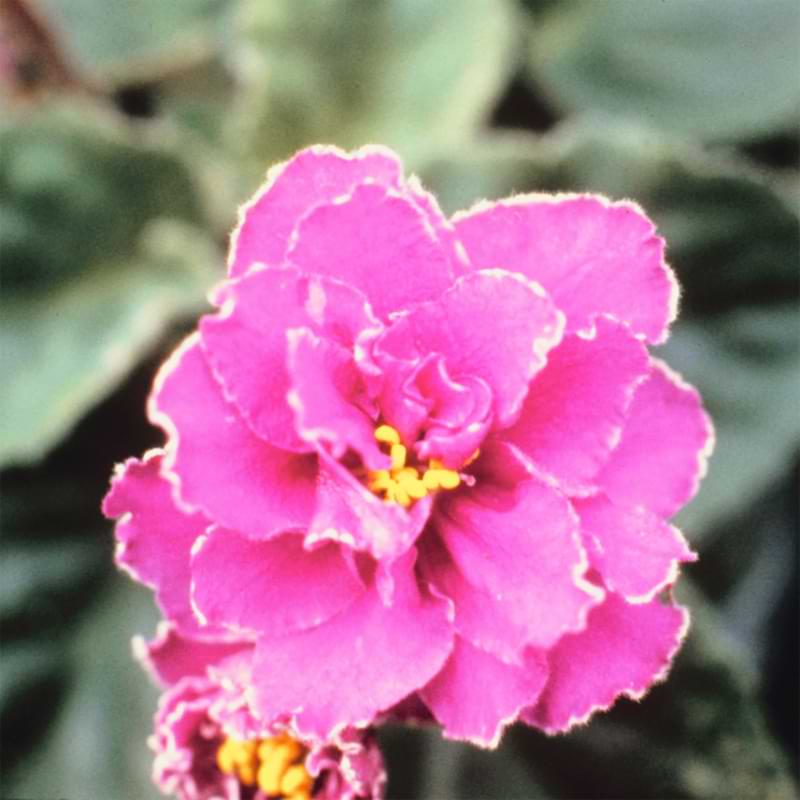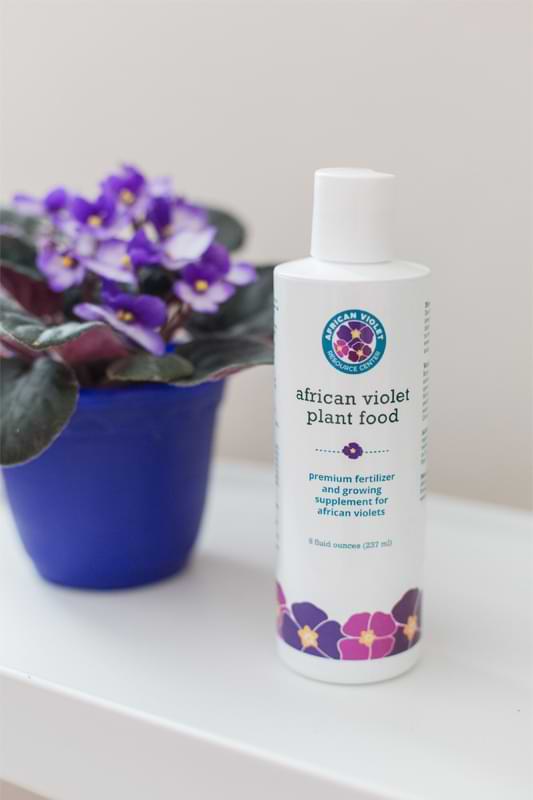African Violets are one of the most popular houseplants, thanks to their colorful and charming blooms. But did you know that there is an even more beautiful variant of African Violet known as the Russian African Violet?
These flowers come in a variety of vibrant colors and have a unique shape that makes them stand out from other plants. However, growing them properly can be tricky. Keep reading for more information about Russian African violets, and how to care for them so you can grow your own stunning blooms at home.
What Is A Russian Violet
While they’re commonly known as African violets, Russian African violets are actually native to East Africa. They were first discovered in 1892 by Baron Walter von Saint Paul-Illaire, after whom they’re named. The plants were introduced to Europe and North America in the early 1900s and quickly became popular houseplants.
A Russian violet is a hybrid of two African violets, the Saintpaulia Jonantha and the Saintpaulia Ruschii. The resulting plant is a cross between the two species, and is intermediate in size and appearance.
Hybridized Ukrainian x Russian Violets
Violets are a popular houseplant because of their beautiful flowers and easy care requirements. African violets originate from Tanzania and Kenya in Africa. These plants were first introduced to Europe and North America in the late 1800s. Russian violets (Exacum Affine) are native to Russia, Ukraine, and Turkey. They were introduced to Europe and North America in the early 1900s.
Hybridized Ukrainian x Russian violets are a cross between African and Russian violets. The resulting plant is more vigorous and floriferous than either parent plant. Hybridized Ukrainian x Russian violets have large, flat leaves and blooms that come in a variety of colors including pink, purple, blue, and white. These plants are relatively easy to grow and make excellent houseplants.


African Violet Russian Varieties
Russian African violets come in a wide range of colors, from deep purple to soft lavender. There are also a variety of patterns and markings available on these flowers. Some of the more popular varieties include:
Blue Eyed African Russian Violet
Blue eyed African violets are a variety of violet that is native to Africa. These violets have blue or purple flowers with very subtle ruffles on the end of the blooms. They are some of the most popular Russian African violet varieties.
Chimera African Violets
Chimera African violets have a distinct pinwheel pattern on the blooms. This unique look is sought after by many African violet collectors, and the blooms themselves can come in many different colors. The most common color is purple with a white pinwheel stripe and pink with either a purple or white pinwheel stripe.
Charlene Fantasy
This stunning Russian African violet has a lovely light purple color mixed with white that is very striking. It also has deep purple splotches on the blooms that make this variety very unique.
Amadeus
The Amadeus Russian violet is a deep raspberry color and is considered a semi-double bloom flower. There is also a white lining on most of the blooms of this gorgeous plant.
Growing Russian African Violets
Keeping a Russian African violet can add the perfect amount of color to any spot in your home. Below is some information about growing a Russian African violet in your home, and what you can expect from them.
Height and Spread
When it comes to Russian African violets, the bigger the better! These gorgeous plants can reach up to 12 inches in height and spread up to 18 inches wide. However, they can also be kept smaller if desired. If you want to keep your Russian African violet on the smaller side, simply pot it in a smaller pot.
Russian African violets follow the same size categories as regular African violets, and those categories are: miniature, semi-miniature, standard, and large. Some people include micro-miniatures in the size categories also.
Miniature African violets are 6 inches round and smaller. Semi-miniature African violets range from 6 inches to 8 inches in diameter. Standard sizes include those that are 8 to 16 inches, and large African violets are anything above 16 inches in diameter.
Seasonality & Lifespan
As with most houseplants, African violets have a dormant period during which they rest and generate new leaves. This typically occurs in late fall and winter. During this time, the plants should be kept slightly drier and cooler than when they are actively growing.
African violets typically bloom for four to six weeks at a time, with individual blooms lasting only a few days. However, by deadheading spent blooms and providing adequate light, water, and fertilizer, it is possible to encourage African violets to bloom continuously throughout the year.
When it comes to lifespan, African violets are relatively long-lived plants. With proper care, they can thrive for many years. Some plants only live from 5-10 years, but others have been known to live for over 50 years!
Foliage
Russian African violets are some of the most colorful and beautiful around. The leaves of these violets are typically a deep green, but can also be found in shades of purple, red, or even variegated.
Flower Blooms
The typical Russian African violet flower has five petals that are fused at the base. The petals may be various shades of blue, purple, pink, or white. The center of the flower usually contains yellow stamens. Some varieties are double bloomers, meaning they have a double layer of petals on each bloom.
If you want your African violets to bloom continuously, it is important to provide them with the proper care. They should be grown in bright, indirect light and kept moist (but not soggy) with regular watering and misting. Give your African violet the best care you can and it will reward you with a ton of blooms!
Russian African Violets Care Guide
African violets are relatively easy to care for and make great houseplants. This care guide goes into detail about how to care for your Russian African violet and how to keep your plant in bloom to enjoy it year-round.
Watering:
To keep your Russian African violets healthy, water them regularly with clean water and avoid getting the leaves wet. Allow the soil to dry out slightly between watering. African violets do not like being in soggy soil, and could quickly die if their soil is too wet for too long. Using a moisture meter can help you keep a close eye on the moisture levels in your plant’s soil.


Fertilizing:
The best way to fertilize your African violet is with our African Violet Plant Food designed for African violets. Apply the fertilizer at half the recommended strength at first, and increase to the recommended dose steadily with each watering. If you notice your plant is giving any signs of fertilizer burn, be sure to flush the soil with clean water afterwards to avoid losing the plant.
Pruning:
Remove any dead or dying leaves from your plant as soon as you notice them. Make sure you use clean, sterilized pruning shears to avoid spreading any diseases to your African violet or to your other plants. You can also prune back leggy stems to encourage new growth.
FAQ Russian African Violets
Can you grow Russian African violets in water?
Russian African violets do not like to have too much moisture, so it’s not ideal to grow them in just water. You can propagate this plant in just water, but growing an African violet in just water will not give this plant the nutrients it needs to thrive.
Do Russian African violets need more light?
No, Russian African violets do not need more light. They are quite content with the lower light levels found in most homes. If you do have a brighter spot in your home, they will do fine there as well. Just be sure to give them a little extra water if the leaves start to yellow. If your Russian violet isn’t producing enough blooms, you may need to supplement your plant with some grow lights or place it closer to a natural light source.
Join the African Violet Club!
Whether you’re just starting out or are a seasoned grower, African Violet Resource Center has everything you need to help your plant grow vibrant and strong. Explore our other articles, visit our online shop, and connect with other houseplant lovers in our Facebook group to learn everything you need to know about this rewarding hobby!





